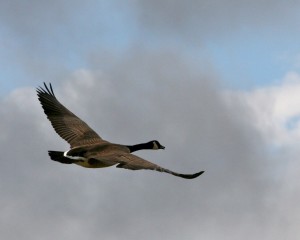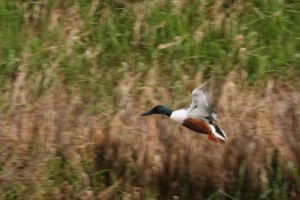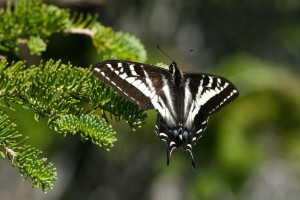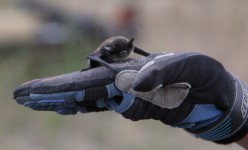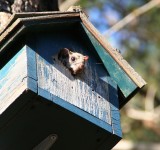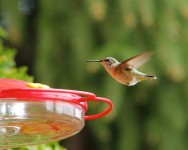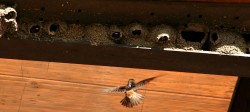To soar like an eagle, hover like a hummingbird or dart through the trees like a chickadee would be incredible.
In the past one hundred years, people have produced amazing aircraft but nothing that truly rivals birds, bats and insects–the only creatures that have mastered true flight. With wingspans that range from less than an inch to eleven-and-a-half feet, insects, birds and bats cover all aspects of flight: flapping, gliding, hovering, silent, speedy, slow, twisting and turning.
By harnessing the power of the wind, an albatross can glide hundreds of miles without flapping its wings that span eleven-and-a-half feet. Albatrosses commonly fly over 500 miles a day and can glide over 3.7 million miles by the time they are 50-years-old.
Another long-distance flyer is the arctic tern which migrates between Antarctica and the Arctic and logs over 50,000 miles a year in the process. The tern doesn’t fly non-stop–it stops to fish along the way.
A shorter migration that is equally impressive is by the ruby-throated hummingbird. Incredibly, the ruby-throated hummingbird can fly over the Gulf of Mexico (500 miles) in 20 hours. That is a lot of wing flapping for a hummingbird which beats its wings 80 to 100 times per second. Hummingbirds also have the distinction of being the only bird to fly backwards and sideways.
All that flapping produces a humming sound distinct to hummingbirds and certain insects such as bees and flies. Except that these insects have to beat their wings much faster to stay aloft–roughly 200 beats per second.
Despite their small size, insects can fly fast–as anyone who has stepped on or bumped into a bee’s nest knows. Interestingly, the fastest insect is the sphinx moth–capable of speeds of 33 mph. That is incredible considering most songbirds fly between 20 and 30 mph. Waterfowl are faster yet with speeds averaging 55 to 70 mph.
Bats can fly over 50 mph. As the only mammal capable of flight (flying squirrels glide and do not fly), bats typically take off by dropping from a hanging position. A bat’s wings are similar to a human hand but skin is stretched between four “fingers” resulting in the wings spanning six inches to six feet.
Whether bats, starlings or waxwings, they never seem to fly into each other when flying in large groups–which scientists have yet to explain. Other birds fly in formation; geese and cranes fly in a V-formation while cormorants and pelicans fly single file.
The gracefulness of a butterfly and the antics of a hummingbird are fascinating to watch, but it is equally as fascinating to watch the not-so-graceful species. As a bird that spends more time on the ground than in the air, the turkey is a comical bird to watch fly and land in a tree. Equally entertaining is a loon running across the water trying to take off. Despite the awkwardness of certain birds, they are still capable of unassisted flight–something we can only dream about.

